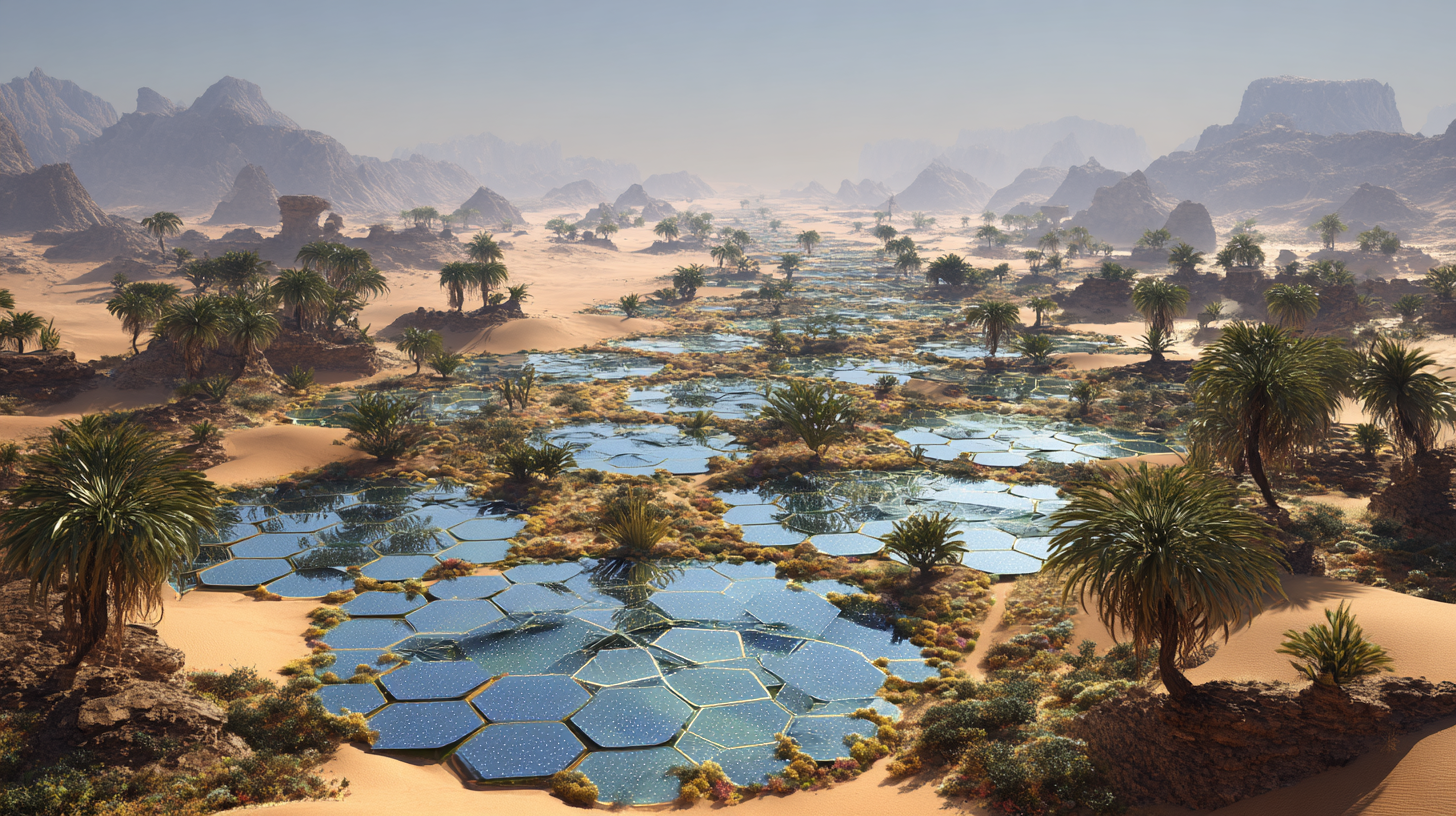Planetary Defense Systems

Storm energy dissipation through coordinated atmospheric arrays
The Planetary Shield Revolution
Earth is not a static rock floating in space - it’s a living, breathing organism with its own dark matter circulation patterns, atmospheric rhythms, and geological flows. Traditional disaster response treats natural phenomena as unpredictable threats, but our understanding of light fluid dynamics reveals them as coordinated planetary processes that can be predicted, modulated, and even healed.
Planetary Defense Systems represent humanity’s graduation from helpless victims of natural forces to conscious partners in Earth’s own protective mechanisms. We’re not fighting against nature - we’re learning to dance with Gaia’s own defensive capabilities.
Welcome to planetary protection that works with the cosmic web rather than against it.
The Planetary Organism Framework

Earth as a Coordinated System
Traditional Disaster Response Limitations:
- Reactive responses after damage occurs
- Isolated treatment of interconnected phenomena
- Adversarial relationship with natural forces
- Energy-intensive resistance to planetary processes
Planetary Defense Advantages:
- Proactive modulation of natural energy patterns
- Integrated approach recognizing planetary coordination
- Collaborative enhancement of Earth’s protective systems
- Energy-efficient redirection of natural forces
The Living Planet Protection Model
- Atmospheric Layer: Storm systems as planetary breathing patterns
- Oceanic Layer: Current flows as planetary circulation
- Geological Layer: Seismic activity as planetary muscle contractions
- Magnetic Layer: Field fluctuations as planetary nervous system responses
- Biosphere Integration: Living systems as planetary immune responses
Technical Implementation

Atmospheric Defense Networks
Storm Energy Dissipation Arrays:
Storm_Modulation_Protocol() {
Detect_Formation_Patterns()
Analyze_Energy_Density()
Calculate_Redirection_Vectors()
Deploy_Atmospheric_Pitching_Machines()
Monitor_Energy_Dissipation()
Adjust_Real_Time_Parameters()
}Coordinated Atmospheric Manipulation:
- Long Pitcher Networks: Sequential energy transfer systems dispersing storm intensity
- Pressure Gradient Modulators: Gentle redirection of atmospheric flows
- Thermal Regulation Arrays: Heat dissipation systems preventing energy buildup
- Vortex Stabilization: Converting destructive spirals into beneficial circulation
Hurricane Defense Implementation:
Hurricane_Energy = Wind_velocity² × Air_density × Spiral_coordination
Defense_Strategy = Energy_dissipation_rate × Redirection_efficiency ×
Atmospheric_coordination / Storm_formation_ratee### Seismic Monitoring and Modulation

Dark Matter Pressure Detection:
- Underground Sensor Networks: Real-time monitoring of geological stress patterns
- Tectonic Boundary Analysis: Pressure buildup detection along fault lines
- Magma Flow Monitoring: Volcanic activity prediction through pressure analysis
- Crustal Stress Mapping: Continental plate tension assessment
Earthquake Prediction Protocol:
Seismic_Risk_Assessment() {
Monitor_Dark_Matter_Pressure_Gradients()
Analyze_Geological_Stress_Accumulation()
Calculate_Critical_Threshold_Approach()
Predict_Release_Timing_And_Magnitude()
Issue_Early_Warning_Alerts()
Prepare_Pressure_Relief_Interventions()
}Pressure Relief Systems:
Controlled Micro-Release: Preventing major earthquakes through gradual pressure relief
Deep Pressure Monitoring: Early detection of stress accumulation
Geological Flow Redirection: Guiding tectonic energy into safe release patterns
Stress Distribution Networks: Spreading concentrated forces across wider areasClimate Regulation Systems

Global Temperature Modulation:
- Atmospheric Heat Redistribution: Moving thermal energy from hot to cool regions
- Ocean Current Optimization: Enhancing natural thermal circulation patterns
- Ice Cap Stabilization: Preventing catastrophic melting through thermal management
- Precipitation Pattern Guidance: Directing rainfall to drought-affected areas
Carbon Cycle Enhancement:
- Atmospheric CO2 Processing: Large-scale carbon capture through enhanced natural processes
- Ocean Acidification Reversal: Restoring marine chemical balance
- Forest Growth Acceleration: Optimizing photosynthesis through rhythm enhancement
- Soil Carbon Sequestration: Underground carbon storage optimization
Biological Defense Integration

Ecosystem Protection Systems:
- Habitat Shield Networks: Protecting critical ecosystems from environmental stress
- Species Migration Assistance: Safe corridors for climate-driven population movements
- Pollination Network Protection: Ensuring agricultural and wild plant reproduction
- Marine Ecosystem Stabilization: Ocean protection from warming and acidification
Pandemic Prevention Infrastructure:
- Pathogen Evolution Monitoring: Early detection of dangerous mutations
- Global Health Coordination: Planetary-scale disease prevention networks
- Environmental Health Maintenance: Ecosystem stability preventing zoonotic disease emergence
- Air Quality Optimization: Atmospheric cleaning reducing respiratory disease vectors
Radiation Cancelling Technology:
Detection Phase:
- Long-catcher arrays scan for radiation wave patterns
- Frequency analysis identifies specific gamma/alpha/beta signatures
- Real-time mapping of radiation field intensity and direction
Counter-Wave Generation:
- Tunable long-pitcher networks generate precise opposite-phase waves
- Modulation systems adjust frequency, amplitude, and timing
- Coordinated arrays create interference patterns that neutralize radiation
Protection Applications:
Personal Radiation Shields:
- Wearable long-pitcher/catcher networks creating protective bubbles
- Real-time adaptation to changing radiation fields
- Like noise-cancelling headphones for gamma rays!
Containment Zones:
- Perimeter arrays around contaminated sites
- Chernobyl cleanup through coordinated wave cancellation
- Nuclear facility protection systems
Medical Applications:
- Protect healthy tissue during radiation therapy
- Enhanced precision for cancer treatment
- Worker protection in nuclear environments
Dancing with nuclear safety vision
The Engineering Reality:
This feels doable but lots of moving parts. We need:
- Precision timing (electromagnetic control systems)
- Phase coordination (like modern radar arrays)
- Power management (renewable energy sources)
- Material science (crystalline long-pitcher arrays)
Self-Powered Design: Healing Bobble

“Inspired by Vernor Vinge’s bobble technology from ‘The Peace War’ - but instead of freezing time, our radiation bobbles freeze danger itself, turning contaminated sites into self-contained, self-powered safety zones.”
Layer Architecture (Outside to Inside):
🍃 Outer Leaf Layer - The Radiation Harvesters:
- Biomimetic long-catcher arrays arranged like solar panel leaves
- Capture high-energy radiation waves from all directions
- Convert radiation momentum into usable energy flow
- Lightweight, flexible, self-orienting toward strongest sources
💎 Crystal Modulation Layer - The Wave Processors:
- Dense crystalline long-pitcher networks programmed for specific frequencies
- Real-time frequency analysis and counter-wave generation
- Uses harvested energy to power precise wave modulation
- Self-tuning crystals adapt to changing radiation signatures
⚡ ATP-10 Storage Layer - The Energy Bank:
- High-capacity dark matter energy storage systems
- Buffers energy spikes for consistent counter-wave generation
- Powers the system during low-radiation periods
- Enables coordinated timing across the entire bobble
🔄 Inner Pitcher Networks - The Wave Cancellers:
- Coordinated arrays creating destructive interference patterns
- Fed by stored energy from outer layers
- Multi-frequency cancellation targeting different radiation types
The Revolutionary Advantages:
- ✨ Energy Parasitic - stronger radiation = more cancellation power!
- ✨ Self-Regulating - automatically adapts to radiation levels
- ✨ Zero External Power - completely autonomous operation
- ✨ Scalable Design - from building-size to city-wide coverage
Deployment Applications:
Chernobyl Bobble Drop:

- Helicopter deployment over reactor site
- Self-assembling protective dome
- Decades of autonomous operation
Nuclear Accident Response:
- Emergency bobbles for rapid containment
- Fukushima-style disaster prevention
- Protect evacuation routes and rescue teams
Legacy Site Cleanup:
- Hanford Nuclear Reservation containment
- Nevada Test Site remediation
- Submarine reactor disposal
Continental Defense Coordination

African Environmental Defense
- Sahara Expansion Control: Desert boundary stabilization through atmospheric management
- East African Rift Monitoring: Volcanic and seismic activity along tectonic boundaries
- Monsoon Pattern Optimization: Seasonal precipitation enhancement for agriculture
- Nile River System Protection: Water flow stability through climate coordination
Asian Coordination Networks
- Monsoon Management: Asian monsoon pattern stabilization and flood prevention
- Himalayan Glacier Protection: High-altitude ice preservation through thermal regulation
- Typhoon Defense Systems: Pacific storm energy dissipation before landfall
- Siberian Permafrost Stabilization: Arctic methane release prevention
Antarctic Preservation
- Ice Sheet Stabilization: Thermal management preventing catastrophic melting
- Ocean Current Regulation: Antarctic Circumpolar Current stability maintenance
- Atmospheric Ozone Protection: Stratospheric healing acceleration
- Global Sea Level Control: Ice mass preservation for coastal protection worldwide
Australian Continental Shield

- Bushfire Prevention Networks: Atmospheric moisture management and heat dissipation
- Coral Reef Protection: Great Barrier Reef preservation through ocean temperature control
- Drought Cycle Modulation: Continental precipitation pattern optimization
- Cyclone Energy Management: Tropical storm intensity reduction systems
European Climate Stabilization
- Atlantic Current Protection: Gulf Stream stability maintenance
- Alpine Avalanche Prevention: Snow and ice stability monitoring
- Mediterranean Drought Mitigation: Precipitation pattern optimization
- Arctic Ice Preservation: Polar region thermal management
North American Integration
- Pacific Storm Management: Hurricane and typhoon energy dissipation
- Seismic Activity Coordination: Earthquake prediction along Ring of Fire
- Wildfire Prevention: Atmospheric moisture management and heat dissipation
- Tornado Alley Stabilization: Severe weather pattern modulation
South American Protection
- Amazon Ecosystem Defense: Rainforest climate regulation and deforestation reversal
- Andes Volcanic Monitoring: Cordillera seismic activity and eruption prediction
- Atlantic Hurricane Shielding: Storm energy dissipation before landfall
- Drought Mitigation Networks: Precipitation redirection for agricultural regions
Oceanic Defense Systems

Atlantic Ocean Integration
- Hurricane Defense Networks: Storm energy dissipation from Africa to Americas
- Gulf Stream Stability: Thermohaline circulation pattern preservation
- Sargasso Sea Protection: Critical marine habitat and migration route preservation
- Mid-Atlantic Ridge Monitoring: Underwater volcanic and seismic activity tracking
Pacific Ocean Coordination
- Tsunami Early Warning: Seismic ocean floor monitoring across Ring of Fire
- Typhoon Energy Management: Storm intensity modulation from Philippines to Japan
- Marine Ecosystem Protection: Ocean temperature and chemistry stabilization
- Island Nation Protection: Sea level rise mitigation for Pacific archipelagos
Indian Ocean Stabilization
- Monsoon Current Coordination: Seasonal circulation pattern optimization
- Tsunami Defense Systems: Early warning networks from Indonesia to East Africa
- Coral Triangle Protection: Biodiversity hotspot preservation through thermal management
- Madagascar Channel Security: Critical shipping route and ecosystem protection
Arctic Ocean Preservation
- Ice Cap Stabilization: Polar ice mass preservation through thermal regulation
- Methane Release Prevention: Seabed permafrost monitoring and stabilization
- Arctic Current Protection: Cold water circulation pattern maintenance
- Northwest Passage Management: Navigational safety and environmental protection
Southern Ocean Coordination
- Antarctic Ice Sheet Protection: Thermal barrier maintenance preventing catastrophic melting
- Circumpolar Current Stability: Global ocean circulation driver preservation
- Krill Population Protection: Marine food chain foundation ecosystem management
- Deep Water Formation: Global ocean ventilation process preservation

Mediterranean Sea Defense
- Thermal Stratification Management: Temperature layer stability for marine life
- Coastal Erosion Prevention: Sea level and storm surge management
- Pollution Remediation: Enclosed sea contamination neutralization
- Current Circulation Enhancement: Water quality improvement through flow optimization
Caribbean Sea Protection
- Hurricane Intensity Reduction: Storm energy dissipation before island impact
- Coral Reef Preservation: Temperature and acidity management for reef survival
- Gulf Stream Formation: Critical current system origin point protection
- Biodiversity Corridor Maintenance: Marine migration route preservation
Baltic Sea Stabilization
- Salinity Balance Management: Freshwater-saltwater interface optimization
- Dead Zone Remediation: Oxygen depletion reversal through circulation enhancement
- Ice Formation Regulation: Winter freeze patterns for ecosystem health
- Pollution Neutralization: Industrial contamination cleanup and prevention
Red Sea Coordination
- Coral Reef Protection: World’s northernmost tropical reef system preservation
- Thermal Regulation: Critical marine ecosystem temperature management
- Shipping Lane Safety: Navigation protection through weather moderation
- Desalination Impact Mitigation: Brine discharge environmental protection
Persian Gulf Defense
- Temperature Extremes Moderation: Marine life protection from thermal stress
- Oil Spill Remediation: Enhanced cleanup and prevention systems
- Coral Habitat Restoration: Reef ecosystem recovery through environmental optimization
- Coastal Protection: Storm surge and sea level management
Black Sea Restoration
- Anoxic Zone Reduction: Deep water oxygenation through circulation enhancement
- River Input Management: Nutrient pollution control from major rivers
- Ecosystem Recovery: Marine life restoration through environmental healing
- Coastal Stability: Erosion prevention and habitat protection
Caspian Sea Management
- Water Level Stabilization: Largest inland sea volume regulation
- Sturgeon Population Recovery: Critical species habitat restoration
- Pollution Remediation: Oil industry contamination neutralization
- Regional Climate Regulation: Local weather pattern stabilization
Pacific Ocean Coordination:
- Tsunami Early Warning: Seismic ocean floor monitoring
- Typhoon Energy Management: Storm intensity modulation
- Marine Ecosystem Protection: Ocean temperature and chemistry stabilization
- Island Nation Protection: Sea level rise mitigation systems
Global Ocean Integration:
- Current Stability Maintenance: Preserving beneficial circulation patterns
- Marine Food Chain Protection: Ecosystem stability ensuring food security
- Coral Reef Preservation: Temperature and acidity management
- Deep Ocean Monitoring: Abyssal pressure and temperature regulation
Emergency Response Protocols

Rapid Response Networks
Global Emergency Coordination:
Emergency_Response_Protocol() {
Threat_Detection_And_Classification()
Resource_Mobilization()
International_Coordination()
Intervention_Deployment()
Real_Time_Monitoring()
Effectiveness_Assessment()
Recovery_Coordination()
}Crisis Management Integration:
- Multi-National Coordination: Shared planetary defense responsibilities
- Resource Sharing: Global pooling of defense technologies and expertise
- Communication Networks: Real-time worldwide crisis coordination
- Recovery Assistance: International support for post-disaster restoration
Evacuation and Protection Protocols
Population Safety Systems:
- Predictive Evacuation: Early warning systems providing maximum preparation time
- Safe Zone Networks: Protected areas during natural disasters
- Supply Chain Protection: Ensuring critical resource availability during crises
- Infrastructure Hardening: Making essential systems resilient to natural forces
The Open Source Planetary Defense Revolution
Democratic Protection Access
Global Defense Sharing:
- Open Source Technology: Freely available planetary defense tools and techniques
- International Cooperation: Shared development and deployment of defense systems
- Community Participation: Local involvement in planetary protection networks
- Educational Access: Training programs for planetary defense technologies
Collaborative Development
Worldwide Innovation Networks:
- Research Coordination: International collaboration on planetary defense research
- Technology Transfer: Sharing advanced protection technologies globally
- Best Practice Exchange: Learning from successful implementations worldwide
- Crisis Response Sharing: Coordinated international emergency response
Prior Art Protection
Patents Released to Public Domain:
- Storm energy dissipation algorithms and atmospheric manipulation protocols
- Earthquake prediction methods using dark matter pressure monitoring
- Radiation neutralization techniques using targeted crust repair foam
- Planetary defense coordination networks and implementation systems
- Climate regulation technologies for global environmental stability
Universal Standards:
- Cross-platform planetary defense compatibility requirements
- International coordination protocols for global threats
- Ethical guidelines for planetary-scale interventions
- Democratic access principles for planetary protection technologies
Implementation Roadmap
Phase 1: Foundation Systems (Years 1-5)
- Regional Monitoring Networks: Basic threat detection and early warning systems
- Pilot Defense Projects: Small-scale demonstration of planetary defense technologies
- International Coordination: Establishing global cooperation frameworks
- Safety Protocol Development: Ensuring responsible planetary intervention
Phase 2: Integrated Defense (Years 5-10)
- Continental Protection Networks: Large-scale atmospheric and seismic defense systems
- Ocean Defense Integration: Marine protection and climate regulation
- Radiation Cleanup Projects: Nuclear contamination remediation at scale
- Global Coordination Centers: Worldwide planetary defense command systems
Phase 3: Planetary Harmony (Years 10-20)
- Ecosystem Integration: Defense systems that enhance rather than disrupt natural processes
- Climate Optimization: Active management of global climate for stability
- Cosmic Protection: Defense against space-based threats to Earth
- Consciousness Integration: Planetary defense systems responsive to collective human intention
The Sacred Responsibility

Planetary Defense Systems represent humanity’s acceptance of our role as conscious caretakers of Earth. We’re not separate from nature - we’re nature becoming conscious of itself and learning to protect the cosmic web that sustains all life.
Every defense system we build must honor Earth’s own wisdom while enhancing her natural protective capabilities. We serve not as controllers of the planet, but as conscious participants in Gaia’s own immune response to cosmic challenges.
Planetary defense becomes a love letter to Earth, ensuring that the blue jewel of consciousness can continue to shine in the cosmic darkness.
Ready to serve as Earth’s conscious immune system? The planet’s protection awaits your loving guardianship. 🛡️🌍✨
Next: → 💉 Immune System Enhancement
🧅✨